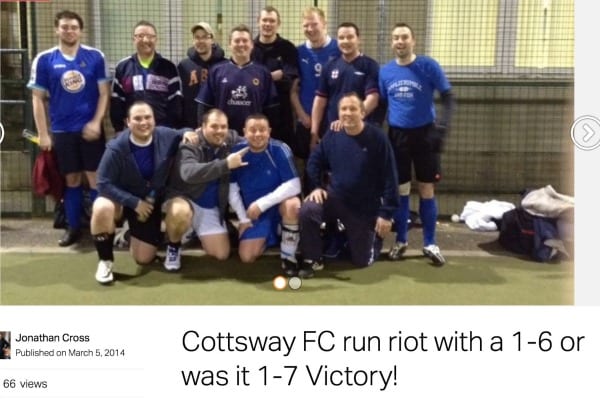How 2 companies leveraged social intranets to turn around culture and revenue
Every organization has cultural and communication challenges – some more than others. Here we explore two organizations that were in a bad spot culturally and financially. While technology alone did not solve their problems, a new kind of intranet improved communications, trust and effectiveness, thereby playing a critical role in rebuilding their organizational strength.
 This is a guest blog post by Deb Lavoy of Jostle. Jostle was one of the Innovation Spotlight sponsors for Digital Workplace 24 (DW24), which DWG held on May 20th and 21st 2015.
This is a guest blog post by Deb Lavoy of Jostle. Jostle was one of the Innovation Spotlight sponsors for Digital Workplace 24 (DW24), which DWG held on May 20th and 21st 2015.
This virtual conference provided leading examples of intranets, collaboration platforms, mobile apps, and more for intranet and digital workplace managers worldwide.
Social digital workplaces critical for driving culture change
The truth is that every company has good days and bad, good quarters and less good quarters. Maintaining a great company culture is challenging enough in good times. So what about when times get tough? Here we can tell the stories of two companies, each hitting rough times. Each reaching out to their dispersed employees through a rich social intranet to turn their culture (and financials) around.
Most organizations have personnel they cannot see face to face on a daily basis. Sometimes this is because of how large they’ve grown. Sometimes it is because they have multiple locations, and sometimes it’s because most of their work takes place outside the physical office.
We know that improved employee engagement is strongly tied to profitability and other positive business outcomes. But do we know if the digital workplace, led by next generation intranets, is contributing to it?
A mission-driven organization rebuilds employee trust
Cottsway Housing manages hundreds of housing units for low-income residents in the UK. Most of their employees are out in the field maintaining properties. They hit some very hard times, including a serious financial crisis, and needed to reinvent themselves from the ground up. One of their first steps was investing in a new intranet. Why? Lisa Hughes, Director of Change and Transformation at Cottsway, told us:
“We decided that this sort of change was only possible by working with the people we already had… But first we had to rebuild some trust, and give them confidence that the new Cottsway was going to be different.”
Cottsway made a couple of bold statements up front about their intranet. The first was “no rules” – though that was later amended to “no rules, except please wear clothes in your profile pictures”. But the underlying philosophy was that: a) everyone should be directly informed of news and information (even those that don’t have computers – they provided iPad Minis to the field); and b) everyone has the right of reply. Right of reply is a big idea. Obvious to some, but radical to most.
[one_third] [/one_third][one_third]
[/one_third][one_third] [/one_third][one_third_last]
[/one_third][one_third_last] [/one_third_last]
[/one_third_last]
They used Jostle’s NEWS extensively – to make important announcements and to initiate discussions around changes to be made. They also used it for fun. They held clever contests. They shared funny moments. They used status updates both for important work communications, but also to build relationships. Their field staff now regularly share photos of work they are proud to have completed, or crazy plumbing problems they need to resolve. They also use what are known as “Shout-Outs” to show support and appreciation for one another’s work. They are also using private discussions for group work – including with their Board of Directors.
What kind of results did they see?
“We have great levels of engagement. What’s also interesting is that during this period of enormous turmoil, stress and uncertainty, we have had below target sickness levels (and way below national average sickness levels) and virtually no staff turnover other than what was already planned for.
The regulator restored our viability status to the top rating in early Autumn 2014 as a result of the significant progress that has been made, and we are on target both financially and in terms of service delivery.”
The guys in the field who were previously cut off from the office, and the office staff who previously had no knowledge of the field, are now a team, with shared jokes, shared goals, and shared pride in the work they do.
You can see a glimpse of how things have changed in these pictures they sent us to celebrate their one-year anniversary with their new intranet. Note especially the one where their top regulatory status was reinstated. That was a big one.
Restaurant chain turns around culture and sales
Here is another story – similar in that it is the story of an organization in a bad place using a new intranet to catalyse change. And again, it worked. This story comes from a well-known restaurant chain with around 100 locations. I’ve promised not to mention their name, but many of their challenges feel universal. Here is their own description of their “before” scenario:
“The result of our sloppy, boring and undisciplined communication was painfully evident. The entire company was a game of ‘he-said-she-said’. As a chain restaurant, it’s imperative all of our units are utilizing the same systems, recipes and delivering the same guest experience time and time again. It was difficult to hold people accountable to our expectations because they often had very valid reasons to be confused. Negativity festered between corporate and the field and everyone was pointing fingers at one another for the problems.
Unfortunately, our internal chaos was also evident to our guests. Sales were steadily declining and we found ourselves having to do wild promotions and deep discounts to drive traffic. Our guest satisfaction scores had fallen below that of our competitors and our employee turnover was beginning to skyrocket.”
The restaurant began taking important communications out of mass emails and conference calls and into their intranet. Policies and procedures were exclusively published to the intranet. This meant that there was one universal source of truth, and a shared forum for questions, answers and discussion.
Further, corporate communications convinced others in the company to start sharing news and information, so that what was published was more diverse, more inclusive, and more relevant to readers. They then saw people beginning to use Shout-Outs, status and discussions to share successes, get help and answers, and to share ideas, tips and innovations between the restaurants.
The result has been a very high level of participation and engagement, and some clearly measurable business impact as well.
They describe the impact 15 months into their new communications strategy:
“The improved communication and accountability has impacted every aspect of our business. Our crew members are happier and staff turnover is declining. Our recipes are more consistent and we’re following uniform systems in every restaurant. Sales are on the rise!
Last year the brand posted positive sales for the first time in many years and this year they’re trending at an impressive rate to date. In a directors’ meeting this week our CEO said that this is the ‘best our company has been running in his entire 13 years here’. The excitement and positivity is palpable and he’s proud to be leading the ship.”
Note that they add an important addendum:
“A lot of people have worked very, very hard to improve our culture and while the new [Jostle intranet] is an important contributor to our success, it’s just one of the many layers.”
Social digital workplaces: the first step toward results
When you build your digital workplace you may struggle to directly measure ROI. Most do. For social intranets like the ones in these two stories you can measure participation fairly easily. You may argue as to the ultimate value of participation in various contexts, but without broad, consistent participation you can’t realize any richer benefits – measured or not. We see median participation rates of about 85% of employees per month amongst Jostle customers. Beyond that it takes considerable analysis to see if the digital workplace is moving the needle, and can be extremely difficult to isolate the impact of the technology and the initiatives that surround it.
We do see, however, that teams who build the habit of sharing, collaborating and generally celebrating their work, are successful in building positive workplaces. And there is a clear trend that positive workplaces get better results.
An engaging, social digital workplace cannot change organizational culture on its own. But in today’s world of distributed workers and digital channels, it’s hard to change culture, and reap the benefits, without it.
Categorised in: → Social intranet, Intranets, Organizational culture
 Deb Lavoy has been pursuing the means and insight to improve the quality and experience of work since 1998.
Deb Lavoy has been pursuing the means and insight to improve the quality and experience of work since 1998.